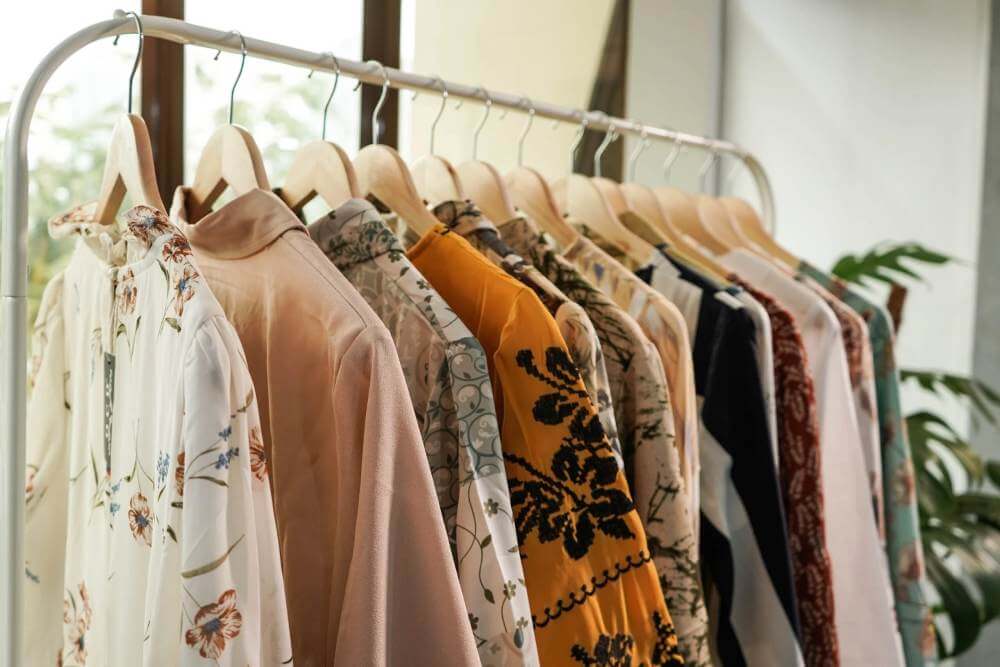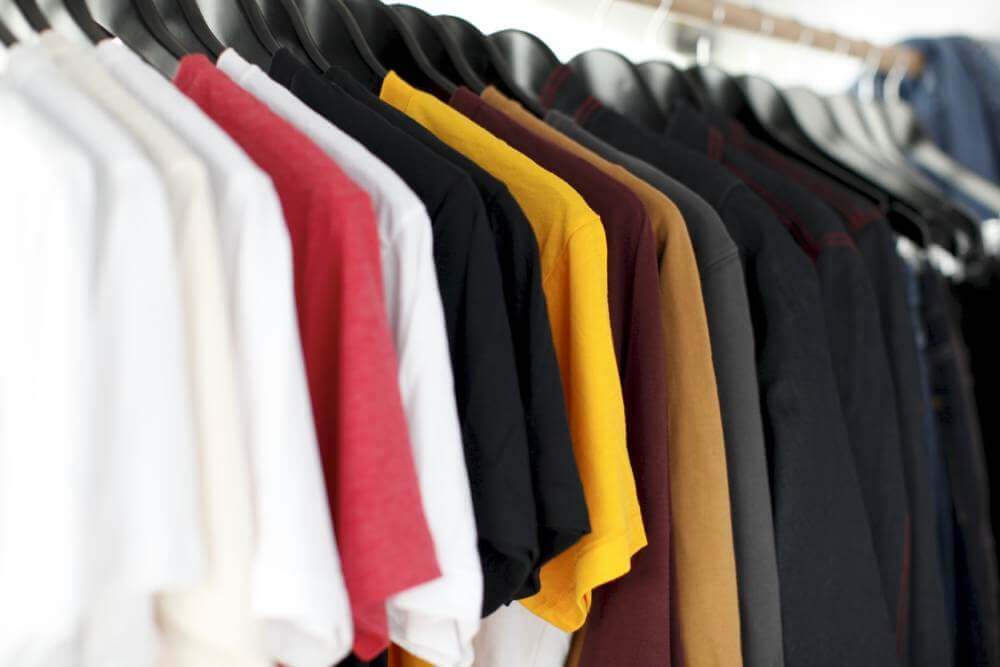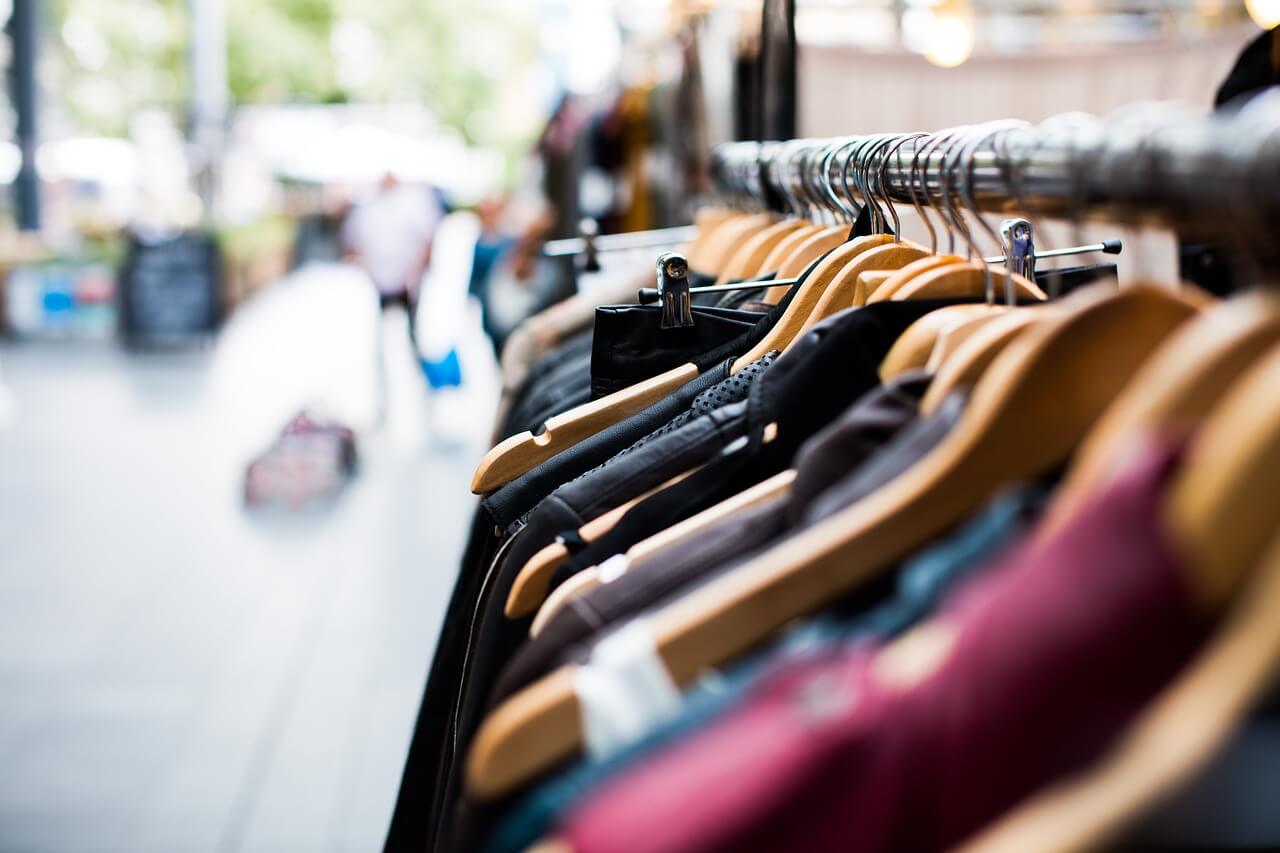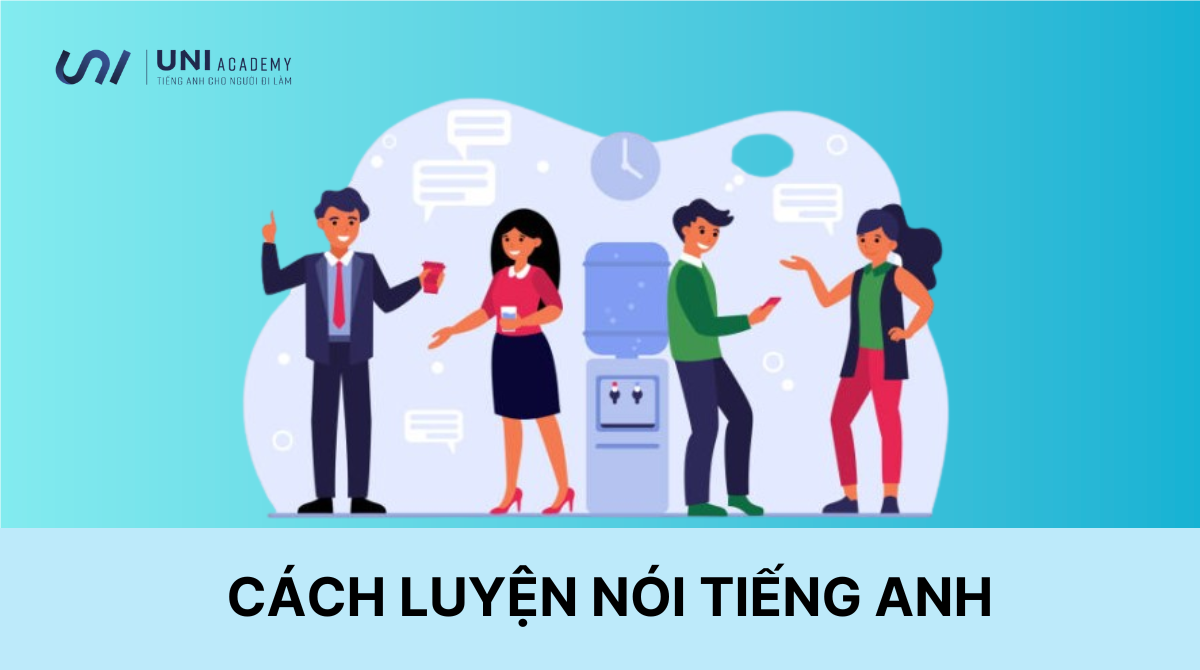Talk about your favorite clothes là một trong những chủ đề phổ biến của bài thi Speaking IELTS. Để có được sự chuẩn bị tốt cho bài thi về Talk about your favorite clothes của mình, bạn có thể tham khảo những gợi ý trả lời dưới đây và tự sáng tạo ra cách trả lời cho riêng mình, từ đó ghi điểm trong mắt ban giám khảo nhé!
Nội dung chính
Từ vựng thường chủ đề Talk about your favorite clothes – IELTS Speaking
- Clothes: Trang phục, quần áo
- Trousers: Quần
- Shirt: Áo sơ mi
- Wear: Mặc
- Discreet: Kín đáo
- Seductive: Quyến rũ
- Elegant: Thanh lịch
- Dynamic: Năng động
- Sport: Thể thao
- Traditional: Truyền thống
- Popular: Phổ biến
- Seldom: Hiếm
- Beautiful: Đẹp
- Unique: Độc đáo
- Selection: Lựa chọn
- Combined: Kết hợp
- Color: Màu sắc
- Designs: Kiểu dáng
- Material: Chất liệu
- Buy: Mua
- Give: Tặng
- Sweet: Ngọt ngào
- Sport shoes: Giày thể thao
- High heels: Giày cao gót
Một số chủ đề liên quan đến Talk about your favorite clothes
About clothes
Một số cụm từ, ý thưởng và câu dẫn cho chủ đề Talk about your favorite clothes:

- The way you dress can can inform passersby about your employment, as well as your ambitions, emotions and spending habits: Cách bạn ăn mặc có thể cho mọi người biết được công việc của bạn, cũng như tham vọng, cảm xúc và thói quen chi tiêu của bạn.
- People usually make judgements about others from the clothes they wear: Mọi người thường phán xét người khác thông qua trang phục họ mặc.
- In the past, clothes used to be colorful: Trước kia, quần áo thường có màu sắc sặc sỡ.
- Tend to wear traditional clothes very often: Có khuynh hướng mặc đồ truyền thống thường xuyên.
- Nowday, due to globalization, people today appear to be changing their their style into jeans and tee-shirts to be more comfortable and modern: Ngày nay, do toàn cầu hóa, con người ngày nay dường như đang thay đổi phong cách của mình thành quần jean và áo phông để thoải mái và hiện đại hơn.
- In the future, the style may change again: Trong tương lai, cá tính sẽ thay đổi một lần nữa.
- Be more versatile: Đa chức năng, linh hoạt
- Jumpsuits may be universal: Áo liền quần có thể sẽ phổ biến
Trends
Một số cụm từ, ý thưởng và câu dẫn cho chủ đề Talk about your favorite clothes:
- Wear newest designed/ branded clothes from head to toe: Mặc quần áo thiết kế/ hàng hiệu từ đầu đến chân
- Confirm one’s social status (be wealthy and stylish), create branding image: Khẳng định vị thế của người giàu có và phong cách của họ, xây dựng thương hiệu cá nhân.
- Create a good impression: Gây ấn tượng tốt
- Cost a fortune/ cost an arm and a leg: Tốn nhiều tiền
- Overspend (tiêu tiền quá mức) money on clothes, shoes, accessories
- Have to follow new trends all the times: Luôn chạy theo xu hướng.
- Squander (hoang phí) both clothes and money
Xem thêm: Các tháng trong tiếng Anh
Uniforms
Chủ đề Talk about your favorite clothes:
Advantages: Thuận lợi
- Help potential customers identify your business – create a brand awareness: Giúp quý khách tiềm năng xác định được doanh nghiệp – tạo nhận thức về thương hiệu.
- Make your employees feel they are part of a team → foster a sense of pride → greater success + increased employee loyalty → improve team building and unity: Làm cho nhân viên của bạn cảm thấy họ là một phần của team → nuôi dưỡng sự tự hào → tạo sự thành công lớn hơn + tăng sự trung thành của nhân viên → cải thiện việc xây dựng đội nhóm và đoàn kết
- Create a professional business image: Tạo ấn tượng tốt và hình ảnh tổ chức chuyên nghiệp
- Everyone feels equal: Mọi người đều cảm thấy như nhau (không người nào hơn ai)
- Eliminate any issues of an individual dressing inappropriately for the job: Loại bỏ bất kỳ vấn đề nào về việc một cá nhân ăn mặc không phù hợp với công việc.
- Protect workers → areas such as construction/ healthcare/security → uniforms → require specialist technologies and fabrics/ specific accessories (helmets, …): Bảo vệ người lao động đối với một số ngành nghề như xây dựng/ chăm sóc sức khỏe/ an ninh → đồng phục → Một số công nghệ và vải chuyên biệt/ phụ kiện (mũ bảo hiểm) được yêu cầu
- Dress codes may discourage sexual harassment in the workplace: Quy định về trang phục có thể ngăn cản hành vi quấy rối tình dục tại nơi làm việc
- Save time → don’t need to spend time worrying about what to wear/ figuring out the right mix of…: Tiết kiệm thời gian → không cần dành thời gian lo lắng về việc mặc gì / sắm ra cách phối đồ … với đồ …
Disadvantages: Không thuận lợi
- Stifle creativity → curtail the freedom of employees → difficult to express themselves: Kìm hãm sự sáng tạo → Nhân viên thiếu sự tự do → khó thể hiện bản thân
- Feel uncomfortable (feel uncomfortable wearing standardised clothing/ high heels,…): Cảm thấy không thoải mái (cảm thấy không thoải mái khi mặc quần áo may sẵn / giày cao gót, …)
- Poorly designed work clothes → restrict performance: Quần áo làm việc có mẫu mã không đẹp → khó khăn hiệu suất làm việc.
Factors for choosing clothes

- The place/ area where we live (you come from urban or rural areas): Địa điểm/ khu vực nơi chúng ta sống (bạn đến từ thành thị hay nông thôn)
- Occasions (daily wear – jeans and T-shirts, or special occations – dresses and high heels): Mặc quần áo theo dịp (đồ mặc hàng ngày – quần jean và áo phông, hoặc các dịp đặc biệt – váy và giày đắt gót)
- Income (rich → fashionable garments, poor/low income → durable clothes): Thu nhập (giàu/thu nhập cao → đồ thời trang, nghèo / thu nhập thấp → quần áo bền và mặc được lâu)
- Seasons (winter → sweater, coats, long-sleeved T-shirts, summer → shorts, tank tops,…): Mặc quần áo theo mùa (mùa đông → áo len, áo khoác, áo phông dài tay, mùa hè → quần short, áo tank top,)
- Age (adolescents → clothes with bright colours): Mặc quần áo theo tuổi(thanh thiếu niên → quần áo với màu sắc tươi sáng)
- Location: Boutiques/ outlets – Một số shop bán lẻ.
Bố cục bài Talk about your favorite clothes – IELTS Speaking
Tùy vào chủ đề Talk about your favorite clothes, bạn có thể tự sắp xếp cho mình một bố cục tiêng. Tuy nhiên, để có một bài viết chỉnh chu và đủ ý, bạn cần xác định rõ bố cục nội dung sẽ triển khai trong bài speaking Talk about your favorite clothes, bạn có thể thao khảo mẫu bố cục của bài Talk about your favorite clothes như sau:
- Mở đoạn: Giới thiệu về bộ trang phục yêu thích
- Thân đoạn: Miêu tả chi tiết về quần áo, bộ trang phục đó.
- Kết đoạn: Nói lên tình cảm, suy nghĩ của bạn về bộ trang phục đó.
Các nội dung chính có thể triển khai trong bài viết về chủ đề Talk about your favorite clothes:
- Mẫu trang phục mà bạn yêu thích là gì?
- Bộ đồ mà bạn yêu thích là gì?
- Màu sắc của bộ quần áo đó là gì?
- Lý do bạn sở hữu bộ quần áo đó là gì? (Do mua hay được tặng.)
- Bạn thường mặc bộ quần áo đó trong thời gian nào?
- Lý do bạn yêu thích phong cách quần áo, bộ trang phục đó?
- Nói về kỉ niệm của bạn với bộ đồ đó (nếu có)?
Mẫu trả lời và câu hỏi thường gặp của Talk about your favorite clothes – IELTS Speaking part 1
What is your favorite outfit? (Trang phục yêu thích của bạn là gì?)
Since I am a minimalist, my preferred colors are black and white. As a result, if I participate in an event, I almost always wear jeans and a T-shirt that match. I believe that limiting our options would simplify our lives.
Where do you often go shopping? (Bạn thường đi mua sắm ở đâu?)
Since I have a larger frame than the typical Vietnamese individual, I frequently choose stores that specialize in clothing for Westerners. The ones that I frequently visit are in nearby shopping centers. I don’t have any other options, despite the fact that the cost there is high and I must live on a strict budget.
Who do you often go shopping with? (Bạn thường đi mua sắm với ai?)
I usually go window shopping alone, but if I’m really in the market for anything, I’ll phone my sister and ask her to come with me. Consulting her has never failed because she has outstanding fashion sense. She never gives me the advice I would really like to know how to pick the finest outfit for myself.
Do you believe that individuals care about their appearance? Why/ Why not?
I believe that clothing is quite important in revealing a person’s sense of style and financial situation. Particularly, the way people combine and contrast the products reveals how stylish and perhaps affluent they are.
When you were a kid, did you have any particular clothing to wear? You liked those, right?
Actually, I wasn’t at all choosy. When I was younger, my mother bought all of my clothes, and I didn’t really care what I wore as long as it allowed me to play with my friends comfortably.
Xem thêm các bài viết liên quan:
Mẫu trả lời và câu hỏi thường gặp của Talk about your favorite clothes – IELTS Speaking Part 2
Describe your favorite piece of clothes. (Mô tả mẫu quần áo yêu thích của bạn). You should say: – Talk about your favorite clothes.
- What kinds of clothes it is (Đó là những loại quần áo nào)
- How you got it (Làm thế nào bạn có nó)
- When you usually wear it (Khi bạn thường mặc nó)
- And why you like it (Và tại sao bạn thích nó)
I don’t consider myself to be particularly fashionable, but I do pay close attention to what I wear. I am a minimalist though, so I don’t have the luxury of dressing up. Black T-shirts and black jeans are therefore my go-to choices.

Those who have a large selection of colors in their clothes find it difficult to mix and match. Thus, neutral hues like black and white work well. And my go-to ensemble consists of a simple black T-shirt and a regular pair of blue trousers.
When I wear this style of clothing, I feel quite confident and at ease whether I’m at work, at school, or just hanging out with friends.
Personally, I believe that this attire is suitable for looking good while visiting some semi-formal locations. This is to say that young people in Vietnam nowadays are impacted by western culture, making it simple for them to choose clothing made in nations like the US. And it’s true that in practically all regions, people like to dress simply and plainly.
I really like this style of clothing since I don’t like having to make choices when I go out into public. I used to have a closet filled with brightly colored clothing and accessories, which truly took a lot of time for me to choose the finest for each occasion.
But now that I’m a minimalist, things are different, and as a result, my fashion preferences have significantly changed. Today, all I will need to do to get ready to go anywhere is to put on a black T-shirt and a pair of blue jeans. That is very easy!
Mẫu trả lời và câu hỏi thường gặp của Talk about your favorite clothes – IELTS Speaking Part 3
Do you think fashion is important in our lives?
In the past, in my opinion, clothing served the purpose of shielding our bodies from the negative impacts of the environment. However, as civilization advances, we are changing our attire to accommodate various societal contexts. Therefore, it’s crucial that we have a variety of outfits to choose from when we attend different events.
To be more precise, smart attire is appropriate for the job and formal occasions, whereas active attire is appropriate for socializing with friends. Therefore, we really need to pay attention to what we are wearing since it must be appropriate and presentable so as to show respect to other people.
Should people wear traditional clothes on a daily basis?
In my opinion, it actually depends on each individual and the local culture in which they reside. I’m referring to the fact that some traditional clothing, such as the Hanbok worn by Koreans and the Ao Dai worn by Vietnamese people, are not particularly ideal for wearing to sporting events.
That is not to argue that we should stop wearing traditional clothing in our daily life. Here, I would want to emphasize that they should only be worn when Hanbok or Ao Dai are deemed to be at their most attractive, such as during formal occasions or at the office.
Như vậy, Unia.vn đã tổng hợp giúp bạn những từ vựng, chủ đề và câu hỏi thường gặp nhất trong phần thi speaking Talk about your favorite clothes. Hy vọng những kiến thức trên có thể giúp bạn cải thiện kỹ năng tiếng Anh của mình và đạt điểm cao trong bài thì IELTS sắp tới nhé!





